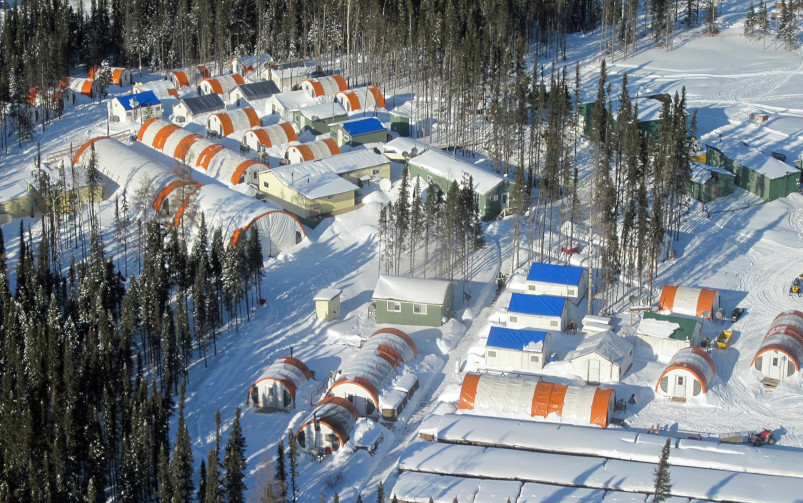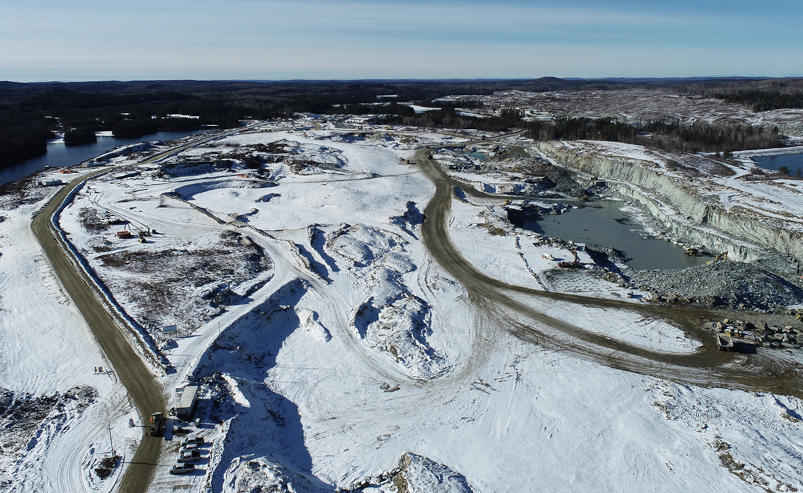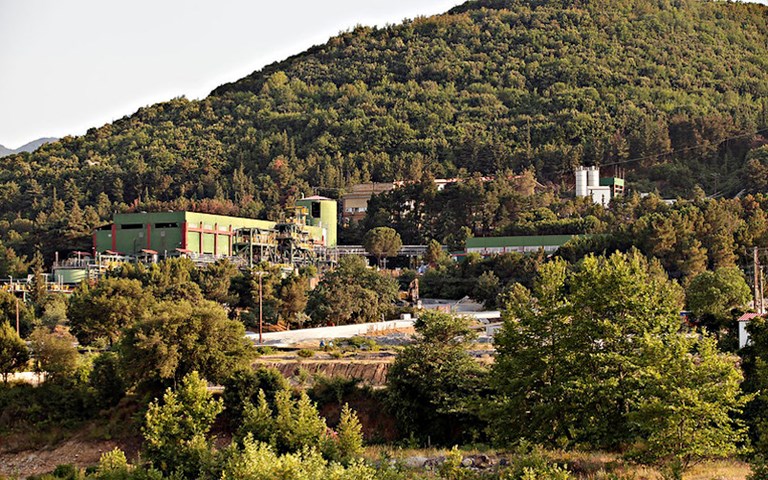Eldorado Gold has signed an investment agreement with the Greek government, allowing the company to expand production at its Olympias mine to 650,000 tonnes per year. Courtesy of Eldorado Gold.
(Like what you’re reading? Get our weekly recap delivered straight to your inbox each Friday.)
Welcome back to your weekly mining news recap, where we catch you up on some of the news you may have missed. This week’s headlines include enthusiasm for A.I.-assisted exploration, Eldorado Gold reaching an agreement regarding its Greek operations and Iamgold designing its Côté Gold mine project with autonomous technology in mind.
Vale has agreed to pay 37.7 billion reais ($8.98 billion) in compensation to the state of Minas Gerais for the collapse of the Brumadinho tailings dam in January 2019, as reported by Bloomberg. The agreement is about two-thirds of the initial amount of R$54.6 billion ($13 billion) sought by the government for material and moral damages. The fine is not expected to impact the company’s investment plans thanks to high iron ore prices.
CIM has published an updated version of Porphyry Deposits of the Northwestern Cordillera of North America, an essential resource for mineral exploration on the west coast. The volume includes enduring works as well as new information, details and advancements on porphyry deposits and explorations from the past 25 years.
Eldorado Gold has signed an investment agreement with the Greek government over the development, construction and operations of its mines in Greece. The deal will allow the company to finish construction at Skouries, a high-grade gold-copper porphyry project and transition it into production as well as expand throughput at the Olympias gold-silver-lead-zinc mine to 650,000 tonnes a year. The agreement will be formally submitted to the Greek parliament for ratification and will be voted on in an upcoming parliamentary session.
Iamgold is looking towards a smarter future for its innovative Côté Gold project in Ontario, which will incorporate autonomous technology to enhance the efficiency of its operations. The project’s goal is to create “zero harm” to the environment, workers and locals, and Iamgold will be collaborating with First Nations communities to monitor and manage the socio-economic effects of the project. Full commercial production at the mine is expected to begin by mid-2024.
Cameco has increased its interest in the Global Laser Enrichment venture (GLE) from 24 per cent to 49 per cent, which has the exclusive right to develop Silex’s laser-based uranium enrichment technology. The process – which Silex says provides significant cost savings compared to traditional enrichment methods – will be used to enrich depleted uranium tails, deliver low-enriched uranium, and produce high-assay low-enriched uranium used as fuel stock for small modular reactor and advanced reactor designs.
A mud rush early Tuesday morning at New Gold's New Afton mine, near Kamloops, British Columbia, has killed a contract driller and injured two other workers, as reported by CBC. Work at the mines was suspended and the RCMP and provincial safety authorities investigated at the site. Work resumed at the mine on Friday, and the remaining surface operations will be ramped up over the following days.
Glencore’s subsidiary Prodeco is relinquishing its mining rights to its Colombian coal operations after a review determined that restarting operations at its Calenturitas and La Jagua mines remained uneconomic, as reported by Reuters. The mines have been on care and maintenance since March 2020, but the request to have them remain that way was denied by Colombia’s National Mining Agency last month. Glencore also has a stake in the Cerrejon coal mine in the country, which continues to produce.
Enthusiasm for machine-learning and AI-assisted mineral exploration technologies is growing as geoscience companies are finding new ways to improve data collection, generate ideas and perform tasks more quickly and efficiently using the technology. While they are highly useful tools, geologists remain crucial to understanding the importance of the data that are being collected and used.
Lakehead University is teaming up with the Ontario government, Impala Canada and the Natural Sciences and Engineering Research Council to fund a $2.5 million project to help support research and development in mineral exploration and mining, as reported by CBC. The university is creating a five-year industrial research chair in mineral exploration and is working to find more efficient ways to discover and analyze mineral deposits.
The government of Ontario has launched the Ontario Geological Survey Focus, an online mapping tool, as reported by Mining Magazine. The tool will allow mining companies to overlap map layers from different mining databases and has the potential to increase claim acquisition and exploration investment in the province.
If you’ve got feedback, you can always reach us at editor@cim.org. If you’ve got something to add, why not join the conversation at our Facebook, Twitter or LinkedIn pages? Like your recap with a few more gifs? Check out our mining news recap stories on our Instagram.
Remember to stay safe, keep your distance and wash your hands!




